Click on the workshop name to read more about the workshop
Workshops Galore!
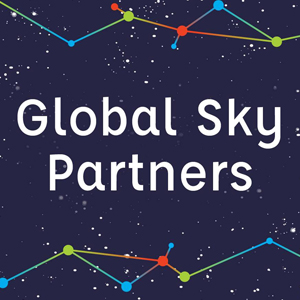
The Global Sky Partner program is an educational endeavour organised and driven by Las Cumbres Observatory utilising the 25 telescopes in their robotic network, primarily the ten 40cm telescopes. The model is that “partners”, of which there has been 29, run the educational side with LCO providing educational resources, observing resources, advice & tech support as well as organising the fertile partner community. This allows a wider diversity of educational programs than any centralized education program could manage. These range from teacher training, student research and observing campaigns through to citizen science and artistic and inclusive outreach. In this extended session, we will explore a variety of the different education partner projects, many of whom are attending. In so doing, attendees will learn about the wide variety of possible projects achievable with LCO, how to join an existing education partner and also how to apply in the annual call for new education partners.
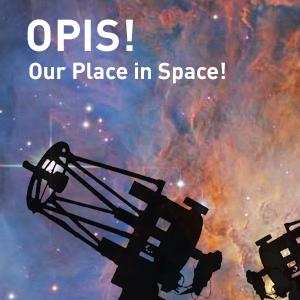
Our Place In Space! (OPIS!) is a Skynet-based laboratory curriculum for undergraduates in small to very large, introductory survey courses – and works equally well online as in person. OPIS! consists of eight, and soon nine, labs in which students use the same research instrumentation as professionals to collect their own data. They then use this self-collected data (astronomical images and spectra) to reproduce some of the greatest astronomical discoveries of the past 400 years, and gain technical and research skills at the same time. Although students are not carrying out cutting-edge research, they are using cutting-edge research instrumentation, and consequently there is great overlap with the Course-based Undergraduate Research Experience (CURE) pathway model. Furthermore, these labs/observing experiences are specifically designed to pair with standard introductory astronomy curricula, facilitating widespread adoption.
Astrophotography of the Multi-Wavelength Universe (MWU!) will be for students who have already completed OPIS!, and will be able to provide this smaller group of students more telescope time per student, making possible color- and radio mapping-, inquiry-based explorations. MWU! will consist of three optical, three radio, and two capstone observing experiences that integrate optical and radio, on the subjects of stars, galaxies, and light-producing mechanisms. Astrophotography will serve as this curriculum’s “hook”.
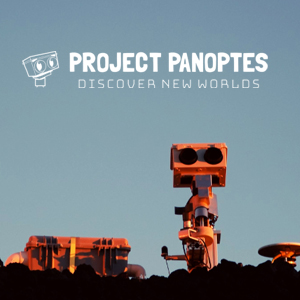
Project PANOPTES (Panoptic Astronomical Networked Observatories for a Public Transiting Exoplanets Survey) uses a network of small robotic wide field imaging cameras to map the night sky. While its primary goal is the detection of transiting exoplanets, a number of other sources can be observed with unprecedented cadence and coverage, such as variable stars, asteroids, and comets. PANOPTES images cover a 15×10 degree each, with 10 arcsec resolution. Multiple units are in operation, including the 16-camera cluster of units at the Mauna Loa observatory in Hawaii.
This hands-on workshop will describe PANOPTES data, how it can be accessed and analyzed, working from short examples. All PANOPTES data is publicly accessible from a web-based front end, the data explorer. Online tutorial and data analysis are provided as a starting point for students, educators and citizen scientists. Research project ideas will be presented and discussed interactively with the workshop participants, with a focus towards collaborative projects among students.
Workshop participants can propose pilot observations ahead of the workshop, and the corresponding data will be inspected and processed during the workshop. Please use this form to propose targets
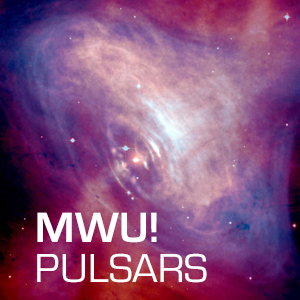
Following the success of the Our Place In Space! (OPIS!) Skynet-based laboratory curriculum for undergraduates, a consortium of educators, led by the University of North Carolina at Chapel Hill, have started development of a new laboratory curriculum initiative, the Multi-Wavelength Universe – MWU! This new curriculum includes a series of optical and radio astronomy activities that target students who have already completed OPIS! that are at a vital point in their academic career when they make the choice to focus their education on a pathway toward a post-baccalaureate career in STEM.
This workshop is centered on the MWU! Pulsar Activity, which introduces students to radio astronomy and the fast time domain properties of pulsars – the rapidly rotating, neutron star remnants of supernovae. Participants will learn how to queue pulsar observations on Skynet’s 20-meter radio telescope and ‘discover’ a strong pulsar by eye from a data set in much the same way they were first discovered by Jocelyn Bell-Burnell and Anthony Hewish in 1967. For weaker pulsars, participants will use a periodogram resource (also used by variable star astronomers) to determine the rotation period of the pulsar, and fold the radio time series at the pulsar’s period to create a profile – a map of the emission versus the rotational phase of the star. Participants will also ‘discover’ the polarization characteristics of pulsars, and investigate the emission geometry thought to be responsible for their observable characteristics.
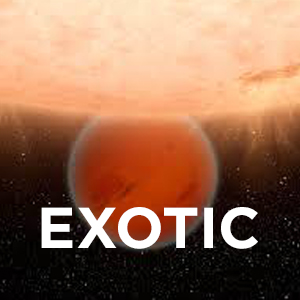
Due to the efforts by numerous ground-based surveys and NASA’s Kepler and Transiting Exoplanet Survey Satellite (TESS), there will be hundreds, if not thousands, of transiting exoplanets ideal for atmospheric characterization via spectroscopy with large platforms such as James Webb Space Telescope and ARIEL. However their next predicted mid-transit time could become so increasingly uncertain over time that significant overhead would be required to ensure the detection of the entire transit. As a result, follow-up observations to characterize these exoplanetary atmospheres would require less-efficient use of an observatory’s time—which is an issue for large platforms where minimizing observing overheads is a necessity. Here we demonstrate the power of citizen scientists operating smaller observatories (<=1 m) to keep ephemerides “fresh,” defined here as when the 1σ uncertainty in the mid-transit time is less than half the transit duration. We announce here the launch of Exoplanet Watch, a community-wide effort to perform ephemeris maintenance on transiting exoplanets by citizen scientists for the professional exoplanet community. Based on >500 observations to date, we demonstrate the capabilities and results of Exoplanet Watch to calculate updated ephemerides, confirm planet candidates, spatially-resolve stellar blends, monitor for epoch-to-epoch stellar variability, and search for new planets or constrain the masses of known planets with transit timing variations greater than two minutes.
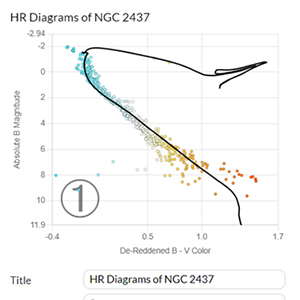
This workshop will introduce the first of the Skynet Robotic Telescope Network’s second-semester STEAM education labs from the upcoming Multi-Wavelength Universe! curriculum. In the lab, students will collect multiband images of open and globular star clusters with Skynet telescopes, then use Skynet’s web-based, open access tools to align and stack images, run calibrated photometry, and produce both colour images and cluster HR diagrams that can be used to estimate age, metallicity, distance and reddening through isochrone modelling. Workshop participants will work through the steps of this analysis, from data acquisition to image processing, source extraction and photometry, and to colour image production and multiband colour-magnitude diagram analysis and isochrone fitting.

Introduction to LCO through colour imaging and variable stars - Las Cumbres Observatory and Partners
Las Cumbres Observatory is a twenty-five telescope network (2 x 2m, 13 x 1m, 10 x 0.4m) based at seven sites around the globe. The telescopes are largely homogenous with similar cameras, spectrographs, filter sets and setups within each size class. It is a purely robotic global network in the sense that a centralised scheduling system allocates your requested observation to the best available telescope it can while simultaneously considering all other requested observations. This unique setup makes it particularly powerful for time-domain astronomy – anything that varies over time and requires continual observations. LCO has three specific science groups dealing with time-domain astronomy concentrating on Exoplanets, Solar System and Supernovae.
In this two part workshop, one on the first day, one on the last, we will introduce Las Cumbres Observatory and provide you with a login for testing purposes. We will explore the observation portal, Kiosk, SEROL and some third party tools as examples of what can be built from our APIs. We will get participants to collect data on a single RR Lyrae, a set of double stars and a three-colour image. The double star data can be used in the double star workshop. The RR Lyrae and three-colour image data can be used in the second LCO workshop. This will leave attendees in good standing to participate in global sky partner program or apply to be a partner program or for potential science uses of LCO.
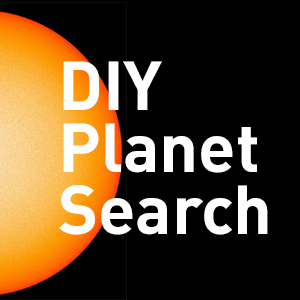
DIY Planet Search (https://waps.cfa.harvard.edu/microobservatory/diy/index.php) is a project of the Center for Astrophysics at Harvard & Smithsonian that allows members of the general public to get involved in the hunt for exoplanets. Participants control telescopes in the CfA’s MicroObservatory Robotic Telescope Network through their web browsers, using them to locate potential exoplanets without having to travel to remote locations or buy expensive equipment.
In this workshop, participants will use the DIY Planet Search interface to collaboratively generate a light curve from observed data whilst learning about transit photometry of exoplanets along the way. After this, the group will be invited to brainstorm potential pathways (and the resources and scaffolding that would support pathways) from this introductory exoplanet photometry experience to more sophisticated exoplanet data analysis projects.

Remotely Operated Telescopes and Asynchronous Learning – A top to bottom look at the possibilities and challenges of this globally available, emerging resource
If there is a positive side to the pandemic, it could be the intense focus on online and asynchronous learning. Although it is clear that student achievement and mental health suffered as a result of isolation, students with disabilities and those from rural communities report that this time had many benefits, some of which can be seen in remote directly operated telescopes projects. This presentation will explore these issues highlight through two such projects; The Stone Edge Observatory and Photon Ranch. Both projects offer access to motivational and engaging STEM experiences.
This presentation and discussion series will consider these projects from the logistics of remote operations to curriculum design and development from the perspective of leveraging gains made through the rapid adaptation of existing materials during COVID with more intentionality of purpose to student learning outcomes and accessibility. This presentation series will look at options for remote telescope operations and associated online educational resources that we can use to meet students’ diverse geographic, technological, and educational needs.
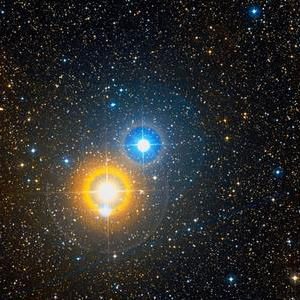
Double Stars seem simple on the surface. These are two (or more) stars visibly orbiting around each other over a fairly long period of time. Their positions relative to each other (the position angle and the angular distance) change slowly over time, such that these motions can be tracked over the decades and centuries that astronomers have been observing them. This (relative) simplicity makes it a very fertile topic to introduce students to their first research project where a meaningful measurement can be made and published in the literature. The outcomes and impacts on the students are communicated elsewhere in the conference, but in this workshop we will have a short active explore and measurement of some of the data that these students have taken as well as the publication process. The workshop will end with an exploration of some of the new technologies, particularly speckle photometry, allowing students to explore binaries at much shorter separations than previously possible.
